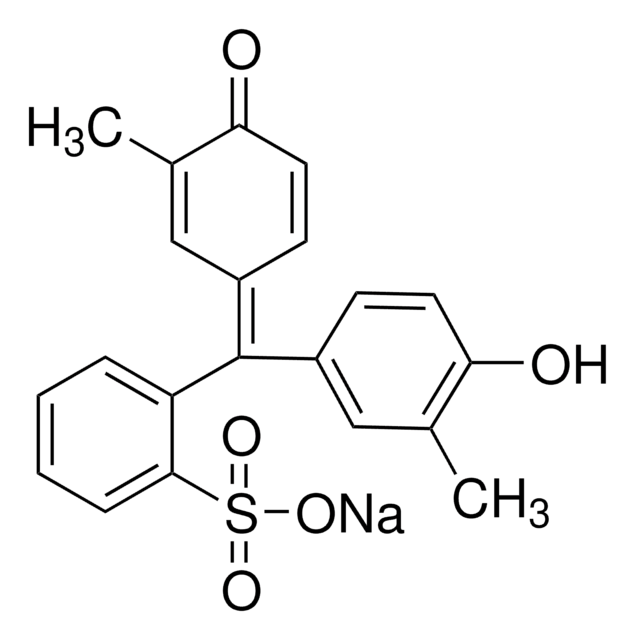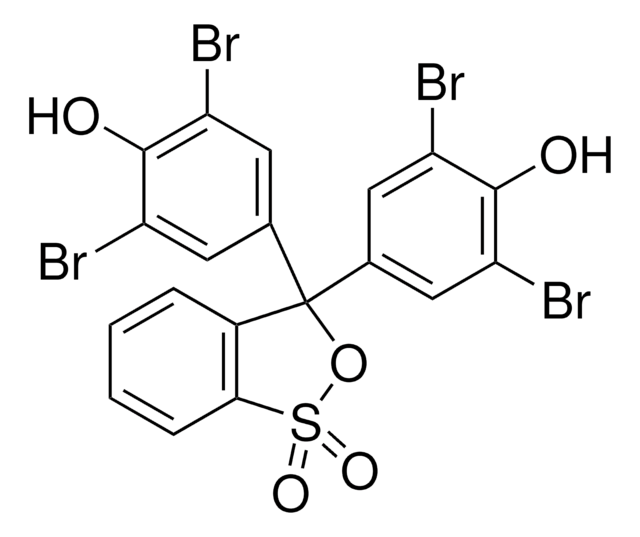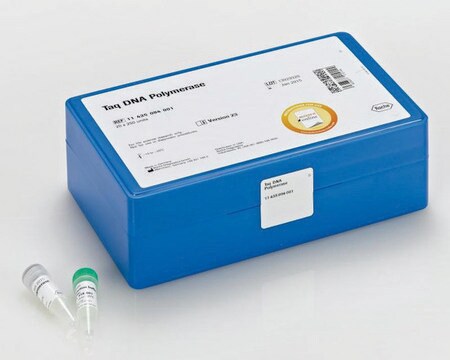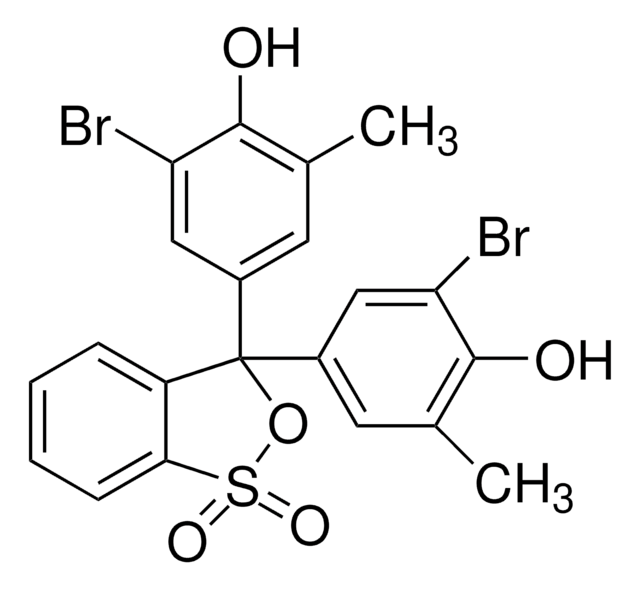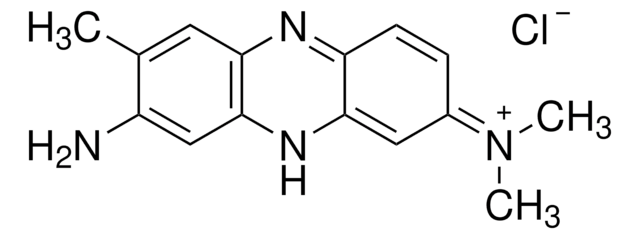Key Documents
114472
Cresol red
indicator grade, Dye content 95 %
Synonim(y):
o-Cresolsulfonphthalein
About This Item
Polecane produkty
klasa czystości
indicator grade
Poziom jakości
Postać
powder or crystals
skład
Dye content, 95%
metody
titration: suitable
kolor
red-brown
pH
7.2-8.8, yellow to red
przydatny zakres pH
1.8-2.0, orange to yellow(acid)
7.0-8.8, yellow to violet(alkaline)
mp
290 °C
gęstość
0.998 g/cm3
λmaks.
367 nm (2nd)
570 nm
Zastosowanie
diagnostic assay manufacturing
hematology
histology
temp. przechowywania
room temp
ciąg SMILES
Cc1cc(ccc1O)C2(OS(=O)(=O)c3ccccc23)c4ccc(O)c(C)c4
InChI
1S/C21H18O5S/c1-13-11-15(7-9-18(13)22)21(16-8-10-19(23)14(2)12-16)17-5-3-4-6-20(17)27(24,25)26-21/h3-12,22-23H,1-2H3
Klucz InChI
OBRMNDMBJQTZHV-UHFFFAOYSA-N
Szukasz podobnych produktów? Odwiedź Przewodnik dotyczący porównywania produktów
Opis ogólny
Zastosowanie
Kod klasy składowania
11 - Combustible Solids
Klasa zagrożenia wodnego (WGK)
WGK 3
Środki ochrony indywidualnej
dust mask type N95 (US), Eyeshields, Gloves
Wybierz jedną z najnowszych wersji:
Masz już ten produkt?
Dokumenty związane z niedawno zakupionymi produktami zostały zamieszczone w Bibliotece dokumentów.
Klienci oglądali również te produkty
Nasz zespół naukowców ma doświadczenie we wszystkich obszarach badań, w tym w naukach przyrodniczych, materiałoznawstwie, syntezie chemicznej, chromatografii, analityce i wielu innych dziedzinach.
Skontaktuj się z zespołem ds. pomocy technicznej